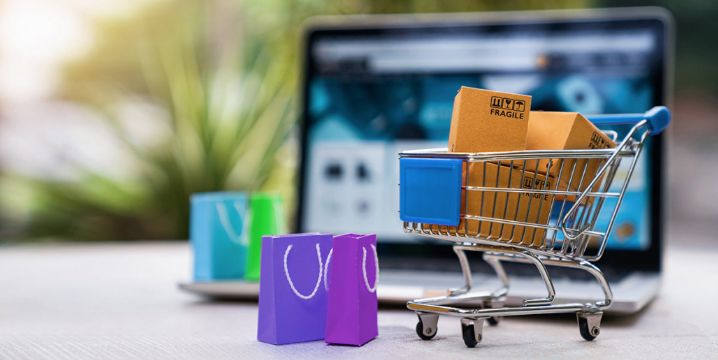These days, just about anybody can create a reasonably good online store that appeals to customers and competes successfully in e-commerce. Contrary to the pervasive myth that it is complicated, time-consuming and expensive to launch an e-store, it can be accomplished without sizable investments. What happens from that point on will depend on your own enterprise and energy, but the start is not as frightening as many people think.
Although it is more challenging to work in e-commerce professionally, engage with a large customer base or solve non-standard business needs, launching an e-business does not require huge investments. There will be a lot of work to do as the e-business develops, but the initial stage itself (which, for many people, is the scariest stage) is not that time-consuming or complicated.
 No Big Investment Needed, Learn How To Launch An E-commerce Business
No Big Investment Needed, Learn How To Launch An E-commerce Business
In principle, by watching YouTube, consulting ChatGPT or reading thematic blogs, just about anyone can create an operational online store. However, drawing on my own experience, I have some valuable pieces of advice.
Getting Started
A popular form of e-commerce business is dropshipping, where goods are dispatched to the customer without the direct involvement of the seller; the seller is merely a go-between. After the order is received, the goods are dispatched to the customer by the manufacturer or a cooperation partner—i.e., a wholesaler or retailer. This model enables e-shop owners to omit the stage where they’re obliged to buy the goods in bulk. Hence, delivery costs are lower, and there is no need to invest in product storage.
While this concept may seem very attractive in theory, I would not advise starting with it. Inexperienced entrepreneurs might find it hard to develop dropshipping and print-on-demand businesses. This is because the market is extremely saturated, and products lack unique attributes (e.g., “made in Latvia,” an interesting story about how the product came to be, etc.). Moreover, if you’re selling a product that can easily be found elsewhere for half the price or even cheaper, it is going to be a hard sell.
This route could be suitable for influencers or people who already have e-commerce experience, but I would not recommend choosing it as the initial way to go unless you do so for learning purposes. In all probability, your first dropshipping store is not going to be very successful.
I suggest starting out with your own service, digital product or physical product. If you start out in e-commerce this way, you will learn more and be sure about what you are actually shipping to the customer. What’s more, it is quite easy to transform an original product with its own story into a brand with additional added value.
Naturally, this is more challenging, but you will find it easier to advertise and grow such an online store on a serious level.
First Steps On The Road To An E-Store
Many people reckon that creating an online store is hard and requires a large amount of money. Although this is indeed the case for specific business needs, major investments are not required for most beginners who just want to experiment with e-commerce. All you have to do to launch an e-shop is register on a platform like Shopify and buy a domain. By performing these two steps, you can start selling something. In addition, you can buy a paid theme or a couple of add-ons from the Shopify App Store.
The next step is to prepare the product. If you’re selling a digital product, you simply need a file in digital format to deliver to the customer once you receive payment. On the other hand, if you’re selling a physical product, it would be a good idea to create suitable packaging. Initially, you don’t need anything too stylish—a common misstep is to invest a lot of money in decorative packaging, only to discover that nobody needs your product.
A good way to go is print-on-demand packages or stickers, while you can buy packages for shipping goods one by one at the post office. You do not need to buy large stocks of packaging upfront. Instead, buy as many packages as you have orders and then build up in line with the number of products you sell.
How To Reach Your Customers
- The homepage should make it clear what you are selling, with clear examples accompanied by reviews and product images. You should also include symbols that affirm your trustworthiness—i.e., people’s faces, familiar logos, your company’s stories, etc.
-
The product page should be easy to understand, with a focus on shopping, and include basic information about the product such as price and core parameters.
-
Good product pictures taken from various angles are useful. These days, you can create and process these with your phone.
-
You should provide easily accessible information about how to return products, delivery costs and speed, and the business itself as well as contact information to be used in the event that something goes wrong.
Now it’s time for your first ad. Needless to say, you can start out by trying paid Facebook Ads and other similar advertising channels. However, if you’re short on experience or don’t have a big budget, there is a considerable risk that your progress will not match your expenditures.
I advise starting with organic articles on social media—engaging in discussions, showing store sections on Reddit, etc. You can also contact local media and inquire about interview opportunities before you consider paid advertising. The most direct return on paid advertising is Google Ads and other search PPC because these allow you to precisely target information at those who really do want to buy something. It is definitely worthwhile working with an agency (even a small one) that can provide these services professionally.




















